According to Liv-ex, Italy has become a ‘dominant force’ on the fine wine market, with the country’s previously under-represented regions rising in importance on the secondary market.
Last year Italy’s sub-index increased 12.2%, and the increased trading of Italian wine on the secondary market trade has shown Italy becoming the third most traded category, according to a recent Liv-ex report. Italy enjoyed a record high market share at 16% in the year-to-date, behind Bordeaux (40.5%) and Burgundy (20.4%).
In recent years, there has been a significant expansion in the market of Italian fine wine, with the number of vintage wines on the secondary market having grown 2,566% between 2010 and 2021. There is no sign of this slowing either, as this year has seen it surpass the levels achieved for the whole of 2020, by 5.3%.
The Liv-ex report shows that demand for the critically acclaimed Super Tuscans has generated the majority of trade, offering steady returns and low volatility. However, as this demand has grown, more Italian brands have entered the secondary market, and there has been greater exposure of some of these ‘lesser’ known regions, such as Veneto, Abruzzo, Umbria, and others which have entered the market in the last two years.
“The increased diversity of Italian wines trading on the secondary market would not have been possible without Italy’s strengthened image as a competitive fine wine force on the international stage,” Liv-ex said.
#finewine #livex #italianwine #italy #winemarket #winebusiness #wineinvestment #supertuscans #wine #winelover #vino #winelovers #instawine #redwine #winestagram #vinoitaliano #winery #sommelier #italia #winelife #vineyard #madeinitaly #tuscany #piemonte #womeninwine #winenews #winemarketing






 Chianti Classico Collection in 2021 becomes “Chianti Classico Connection”
Chianti Classico Collection in 2021 becomes “Chianti Classico Connection”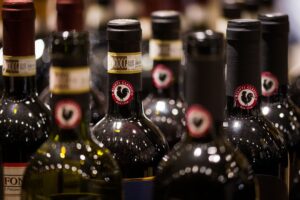 The “Collection”, this year, was entitled “CC” (Chianti Classico) “Connection”. This global event is synchronized in 5 different countries, including multiple days at the end of May for Chicago, Florence, London and New York and the end of June was reserved for Munich, and Tokyo. In these six important cities, the Black Rooster presented a hybrid format combining an in-person tasting for the sector’s professionals and online interaction with the producers. The Consortium gathered a selected international audience from the wine sector, with the attendance being over 2,800 experts and members of the press, 400 wines being presented with10,000 bottles being tasted.
The “Collection”, this year, was entitled “CC” (Chianti Classico) “Connection”. This global event is synchronized in 5 different countries, including multiple days at the end of May for Chicago, Florence, London and New York and the end of June was reserved for Munich, and Tokyo. In these six important cities, the Black Rooster presented a hybrid format combining an in-person tasting for the sector’s professionals and online interaction with the producers. The Consortium gathered a selected international audience from the wine sector, with the attendance being over 2,800 experts and members of the press, 400 wines being presented with10,000 bottles being tasted.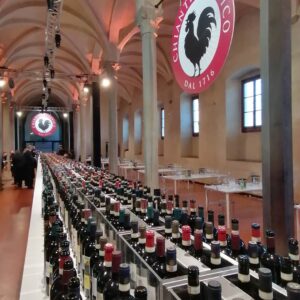 Chianti Classico Moving Forward
Chianti Classico Moving Forward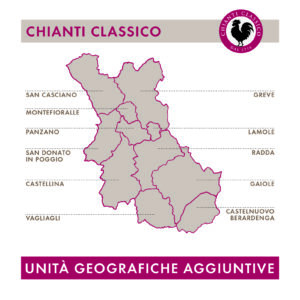 Gran Selezione Regulation Switches Toward Sangiovese
Gran Selezione Regulation Switches Toward Sangiovese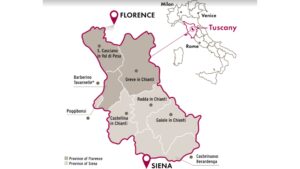 Chianti Classico Passport
Chianti Classico Passport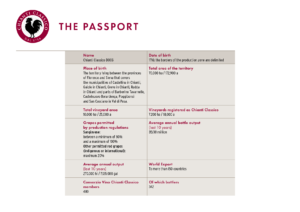
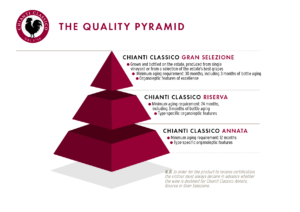 Chianti Classico is offered in three different types that represent its qualitative pyramid:
Chianti Classico is offered in three different types that represent its qualitative pyramid: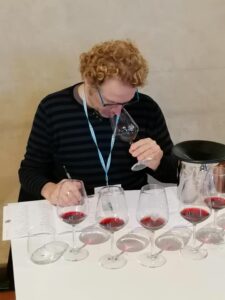 Having spent only one day at Chianti Classico Collection, I have reviewed 162 wines, from Annata Chianti Classico 2019 and 2018, as well as Riserva and Gran Selezione 2018 categories. The Chianti Classico 2019 Annata showed beautiful lively-colored, ripe fruit with great aromatic intensity. An appropriate level of natural acidity guarantees good fragrance. The vast majority of wines I tasted were graceful with slightly lower alcohol content than average previous vintages. The Chianti Classico 2018 Annata, in general, turned out to be soft, fruity with good structure and balance. This is partly a reflection of the vintage which started cool and continued quite rainy through the summer, ending with nice weather during harvest. I found a wide range of great wines, showing high intensity and complexity of aromas in the Riserva and Gran Selezione 2018 categories.
Having spent only one day at Chianti Classico Collection, I have reviewed 162 wines, from Annata Chianti Classico 2019 and 2018, as well as Riserva and Gran Selezione 2018 categories. The Chianti Classico 2019 Annata showed beautiful lively-colored, ripe fruit with great aromatic intensity. An appropriate level of natural acidity guarantees good fragrance. The vast majority of wines I tasted were graceful with slightly lower alcohol content than average previous vintages. The Chianti Classico 2018 Annata, in general, turned out to be soft, fruity with good structure and balance. This is partly a reflection of the vintage which started cool and continued quite rainy through the summer, ending with nice weather during harvest. I found a wide range of great wines, showing high intensity and complexity of aromas in the Riserva and Gran Selezione 2018 categories.